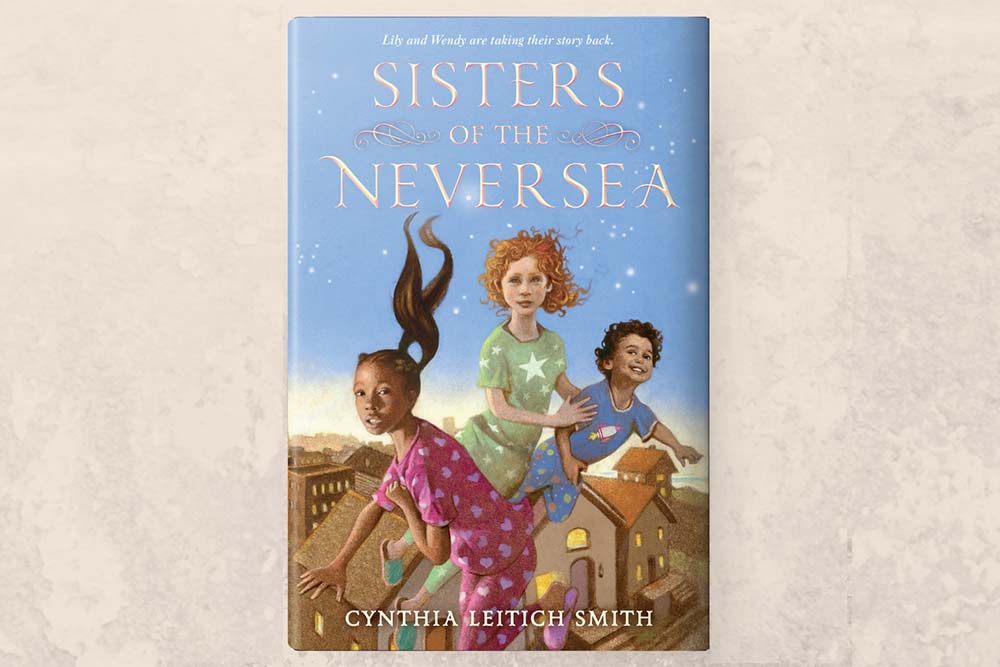
- Details
You’ve heard of Peter Pan, but have you ever read the 1911 classic novel of the same name by J.M. Barrie? Growing up, I adored fantastical stories, but it never occurred to me to reach for that one. Its offensive depictions of Native characters were no secret, and my local library provided me with countless better books to read. That said, none of those better books showcased Native young heroes.
One of my goals is to offer Native kids the kind of stories I wish I’d had a chance to read as a child. The latest of these is a fantastical middle grade novel titled Sisters of the Neversea.
When it comes to children’s books, today’s publishing landscape is increasingly more respectful, authentic, and inclusive. A growing number of talented Native and First Nations writers and illustrators are creating beautifully crafted, page-turning books. In fact, the We Need Diverse Books nonprofit organization has partnered with HarperCollins Children’s Books on a new Native-focused imprint called Heartdrum, for which I’m honored to serve as the author-curator. All we do is publish wonderful books by Native people about Native heroes that will appeal to both Indigenous young readers and to all those who love a good story. After all, a Native hero is a hero that everyone should cheer!
More personally, I’m likewise pleased to have authored contemporary, realistic children’s books like Jingle Dancer, Indian Shoes and Ancestor Approved: Intertribal Stories for Kids. But as much as kids embrace daily-life narratives like those, they also long for glittering magic, unexpected marvels, high-stakes adventure—a panorama of imaginary escapades. They thrill at the thought of storybook pirates, mischievous Merfolk, and glittering fairies. They wish they could fly.
In Sisters of the Neversea, I reimagined the world of J.M. Barrie to lovingly invite in today’s young readers. It’s a new story—centered on stepsisters Lily Roberts (Muscogee Creek) and Wendy Darling (white British American)—that celebrates family, friendship, and, of course, fairy dust.
As for the Native characters on (and off) Neverland, gone are the monosyllabic dialogue, the Hollywood “Old West” stereotypes, and the paper-doll portrayals that insulted Indigenous humanity. Instead, Sisters of the Neversea features modern-day, tribally specific kids. Lily, Wendy, and their little brother Michael hail from a bicultural, blended family in suburban Tulsa, and more broadly, all the Native kids in the book are informed by cultural values and the wisdom of their elders. They come together as an intertribal community to take care of one another and try to rescue themselves and the Lost kids, too. They show respect for the land, the sea, and its original inhabitants. Girls and women are integral, their contributions valued, and, in case you were wondering, they’re not inclined to pine for the affections of a certain flying boy who won’t grow up.
No, Peter Pan doesn’t get a pass, and neither does J.M. Barrie. The toll exacted by problematic narratives and the importance of healing ones is seamlessly integrated into my villain’s character. His arc thoughtfully unpacks that dynamic but also reframes it to ensure brighter days to come.
That’s a peek for the grownups into the story behind the story, a few behind-the-scenes insights from this storyteller, but I certainly don’t expect young readers to consciously pick up on all that.
As for Sisters of the Neversea itself: The book is a rollicking fairy tale! A twenty-first century narrative that says to Native kids and their non-Native friends that they’re all welcome in the world of books. I’m delighted to share that the novel has already garnered starred reviews, which is always encouraging, but I’m most honored by the feedback I received from a Native educator who told me that she could hardly wait to share the book with her grandchildren.
Help us tell the stories that could save Native languages and food traditions
At a critical moment for Indian Country, Native News Online is embarking on our most ambitious reporting project yet: "Cultivating Culture," a three-year investigation into two forces shaping Native community survival—food sovereignty and language revitalization.
The devastating impact of COVID-19 accelerated the loss of Native elders and with them, irreplaceable cultural knowledge. Yet across tribal communities, innovative leaders are fighting back, reclaiming traditional food systems and breathing new life into Native languages. These aren't just cultural preservation efforts—they're powerful pathways to community health, healing, and resilience.
Our dedicated reporting team will spend three years documenting these stories through on-the-ground reporting in 18 tribal communities, producing over 200 in-depth stories, 18 podcast episodes, and multimedia content that amplifies Indigenous voices. We'll show policymakers, funders, and allies how cultural restoration directly impacts physical and mental wellness while celebrating successful models of sovereignty and self-determination.
This isn't corporate media parachuting into Indian Country for a quick story. This is sustained, relationship-based journalism by Native reporters who understand these communities. It's "Warrior Journalism"—fearless reporting that serves the 5.5 million readers who depend on us for news that mainstream media often ignores.
We need your help right now. While we've secured partial funding, we're still $450,000 short of our three-year budget. Our immediate goal is $25,000 this month to keep this critical work moving forward—funding reporter salaries, travel to remote communities, photography, and the deep reporting these stories deserve.
Every dollar directly supports Indigenous journalists telling Indigenous stories. Whether it's $5 or $50, your contribution ensures these vital narratives of resilience, innovation, and hope don't disappear into silence.
 The stakes couldn't be higher. Native languages are being lost at an alarming rate. Food insecurity plagues many tribal communities. But solutions are emerging, and these stories need to be told.
The stakes couldn't be higher. Native languages are being lost at an alarming rate. Food insecurity plagues many tribal communities. But solutions are emerging, and these stories need to be told.
Support independent Native journalism. Fund the stories that matter.
Levi Rickert (Potawatomi), Editor & Publisher
